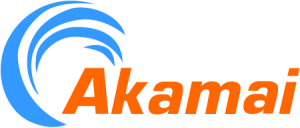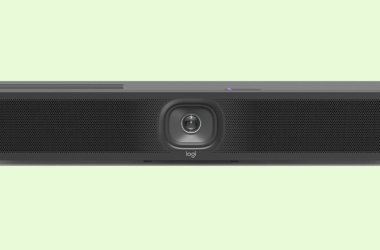 Akamai will offer IPv6 services to its entire customer base in April – a long-awaited move that will be a major boon to the adoption rate of the next-generation Internet Protocol.
Akamai will offer IPv6 services to its entire customer base in April – a long-awaited move that will be a major boon to the adoption rate of the next-generation Internet Protocol.
Carrying between 20% and 30% of the Internet’s Web traffic on any given day, Akamai is the world’s largest content delivery network (CDN). Akamai’s engineering team has been working for two years to upgrade its 95,000 servers in 71 countries connected by 1,900 networks to support IPv6.
“We’re highly supportive of IPv6. We’re a large consumer of IP addresses as well, so there are internal drivers. We need and want IPv6 addresses as well as just supporting the Internet community as it migrates to IPv6,” said Mike Cucchi, director of product marketing at Akamai.
IPv6 is an upgrade to the internet’s main communications protocol, which is called IPv4.
IPv6 features an expanded addressing scheme that can support billions of devices connected directly to the Internet. But IPv6 is not backward compatible with IPv4, which is running out of addresses. Network operators can either support both protocols in what’s called dual-stack mode or translate between IPv4 and IPv6.
In April, Akamai will announce built-in support for IPv6 in its three major product lines: Aqua for consumer-oriented services, Terra for enterprises and Sola for media companies. Companies will be able to upgrade to these application-as-a-service offerings in a matter of days, rather than spending weeks or months upgrading their own Web servers to support IPv6.
“We know IPv6 is part of doing business on the Internet, and we’re going to include it on all of our platforms,” Cucchi said.
Akamai hoped to release its production-grade IPv6 services by the end of 2011, but the task proved more difficult than originally anticipated. Akamai has been beta testing its IPv6 services with key customers since last fall.
Akamai’s support for IPv6 will make it easier for its media and enterprise customers to serve up Web content to Internet users that have IPv6-only addresses, which is increasingly common in Asia and Europe. Among Akamai’s customers are Apple, Lands’ End, Ticketmaster, Travelocity and XM Satellite Radio. Akamai delivers more than 5 terabits/sec of Web traffic per day.
We want to act as a translator. Our customers can leverage Akamai through these transitional times. We can terminate IPv6 requests at the edge and send forth IPv4 to the data centre environment. Our future roadmap will have a two-way translation that occurs,” Cucchi said.
Akamai’s timing is ideal for U.S. federal agencies, which are required by an Obama administration mandate to support IPv6 on their public-facing websites and Web services by Sept. 30. Akamai’s federal customers include the Department of Defense, the Food and Drug Administration and the Federal Emergency Management Administration.
“We’ve had a number of government sites transition to being dual-stacked at Akamai. We’re working with the rest of our government customers to help them with the September deadline,” said Eric Nygren, chief architect at Akamai.
Akamai says its April launch of commercial-grade IPv6 services is on target for when its government and enterprise customers will deploy IPv6.
“2012 is the year for the design-and-build phases around the world. We’ve been getting ready for this. Now the market is starting to take IPv6 seriously. By the end of 2012, we’re going to see some real uptick in the percent of IPv6 traffic we see out there,” Cucchi said.
Today, only 0.5% of the Internet traffic that Akamai carries is IPv6. However, that will change come April, when Akamai moves out of its beta test program and announces full availability of its IPv6 services.
Akamai says it has run into some difficulty deploying IPv6 because IPv6 services are not available from all ISPs around the globe. Also, several major ISP networks are not peering with each other over IPv6, causing backbone routing issues.
“We’re seeing a lot more backbone brokenness on the IPv6 Internet than on the IPv4 Internet. We’re doing a lot to try to help,” Nygren says, adding that some data center locations don’t have IPv6 connectivity at all.
“Using Akamai for IPv6 will be extremely valuable to [our customers] to help them deal with the brokenness. Their users will have a better chance of getting to that content if we’re serving it up near them versus going halfway around the world,” he said.
Another problem that Akamai has run into is malware that takes advantage of IPv6.
“You can go make your website dual stack and add Quad-A records, and now malware will follow that Quad-A record. It will start port-scanning your site or spidering your site and start attacking you over IPv6 if your [intrusion detection system] or firewall aren’t set up for IPv6. We can help mitigate this threat by being between customers and IPv6-based attacks,” Nygren said.
Akamai says its IPv6-based services will help protect customers from IPv6-based malware as well as IPv6 floods and distributed denial of service (DDOS) attacks.
“On our platform, we have this nice benefit of being a huge shock absorber. We not only translate IPv6 requests, but we only forward well-formed HTTP requests. Synfloods and IPv6 floods are all dropped at the edge of our network,” Cucchi said.
In related news, Akamai has committed to participate in World IPv6 Launch Day, a June 6 deadline for network operators to enable IPv6 on their public-facing websites and leave it on for good. Other Internet companies that have committed to launch IPv6 on June 6 include Google, Facebook, Yahoo and Microsoft. Akamai says its April launch of commercial IPv6 services will help companies and government agencies that want to participate in the June 6 event, which is being sponsored by the Internet Society.





